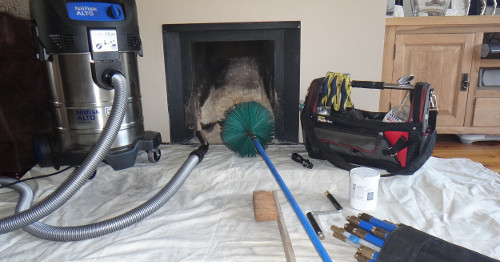Secure Your Home with Routine Chimney Maintenance San Jose Practices
Secure Your Home with Routine Chimney Maintenance San Jose Practices
Blog Article
Specialist Tips for Effective Smokeshaft Maintenance You Need to Know
Chimneys function as vital parts in several homes, providing warmth and comfort. Ensuring their proper upkeep is commonly ignored till problems arise. Recognizing the ins and outs of chimney treatment can be the secret to preventing costly repairs and safeguarding your home and household. From the relevance of routine evaluations to secure operational methods, a detailed method to chimney upkeep is vital. Allow's explore specialist pointers that can help you keep your chimney in optimal problem for several years to find.
Importance of Normal Assessments
Regular assessments of chimneys are crucial for guaranteeing their security and performance. Chimneys play a vital duty in venting out damaging gases and preserving correct air movement in a home. Over time, creosote accumulation, debris, and architectural damage can take place within the chimney, posturing significant risks such as chimney fires or carbon monoxide leakages.
Throughout a smokeshaft examination, educated experts assess the condition of the smokeshaft, looking for any kind of indications of damage, blockages, or wear and tear. They additionally inspect the integrity of the flue, chimney liner, and smokeshaft cap to ensure every little thing is in proper functioning order. By recognizing and attending to issues early, pricey fixings or possible hazards can be stayed clear of.
Regular inspections not only help in preserving the safety of the smokeshaft yet additionally add to its total efficiency. A properly maintained and clean smokeshaft operates extra properly, ensuring correct air flow and reducing the danger of indoor air contamination. For that reason, scheduling annual smokeshaft assessments is a proactive measure that homeowners can require to secure their residential or commercial property and loved ones.
Cleaning Methods and Frequency
Keeping the safety and security and effectiveness of a smokeshaft entails not just normal examinations however likewise carrying out appropriate cleaning methods and establishing the ideal frequency for cleansing. Smokeshafts ought to be cleansed by an expert chimney sweep a minimum of annually, even if they are not regularly utilized. Nevertheless, if the smokeshaft is utilized consistently, especially with wood-burning ranges or fireplaces, it might need even more regular cleansings to avoid the build-up of creosote, an extremely combustible compound that can result in chimney fires.
Homeowners must never disregard smokeshaft cleansing, as it is necessary for keeping a risk-free and functional smokeshaft system. Normal cleansings not just reduce the threat of smokeshaft fires but also improve the smokeshaft's general efficiency and long life.
Addressing Chimney Leaks

When addressing smokeshaft leakages, comprehensive inspection and timely repairs are vital to avoid water damage and keep the structural integrity of the smokeshaft. Leakages in a chimney can lead to severe concerns such as mold growth, wear and tear of the chimney framework, and also potential fire dangers. more tips here To properly address smokeshaft leaks, beginning by inspecting the chimney cap, crown, flashing, and stonework for any kind of signs of damages or wear.
Understanding Creosote Build-Up
To understand the prospective risks of creosote accumulation in smokeshafts, it is important to identify its development process and influence on chimney performance. Creosote is a brown or black tar-like material that accumulates inside smokeshaft systems when timber or nonrenewable fuel sources are shed. As smoke climbs through the chimney, it cools down and condenses, bring about the development of creosote, which abides by the smokeshaft walls.

Routine smokeshaft assessments and cleansings by an expert chimney sweep are crucial in protecting against creosote accumulation and ensuring the risk-free operation of your smokeshaft system.
Safe Operation Practices
Implementing proper security methods is necessary for the safe and effective procedure of chimney systems. Constantly guarantee that the chimney is expertly examined and cleaned consistently to remove any creosote accumulation, which can lead to smokeshaft fires.
Additionally, see to it to just shed experienced wood in your fireplace, as wet or eco-friendly timber can generate even more creosote and trigger unsafe chimney clogs. Last but not least, never ever leave a fire ignored and always see to it the fire is totally extinguished prior to going to sleep or leaving your home. By adhering go to my site to these secure procedure practices, you can appreciate a cozy and comfortable fire while making page sure the security of your home and loved ones.
Final Thought
Finally, maintaining your smokeshaft is vital for guaranteeing its safety and security and efficiency. Routine inspections, proper cleaning strategies, dealing with leakages, managing creosote build-up, and complying with risk-free procedure practices are vital elements of smokeshaft maintenance. By remaining on top of these tasks, you can protect against prospective dangers and lengthen the life-span of your smokeshaft. It is essential to prioritize chimney upkeep to keep your home secure and cozy throughout the chillier months.
Over time, creosote build-up, particles, and architectural damage can take place within the chimney, positioning significant dangers such as smokeshaft fires or carbon monoxide leaks.
If the smokeshaft is made use of consistently, especially with wood-burning ranges or fire places, it might need more frequent cleansings to protect against the buildup of creosote, a highly combustible substance that can lead to chimney fires. (Chimney Maintenance San Jose)
To understand the potential risks of creosote build-up in smokeshafts, it is vital to recognize its formation process and impact on smokeshaft efficiency. As smoke increases with the smokeshaft, it condenses and cools, leading to the formation of creosote, which adheres to the smokeshaft wall surfaces.
Always ensure that the smokeshaft is expertly inspected and cleansed routinely to remove any creosote buildup, which can lead to chimney fires.
Report this page